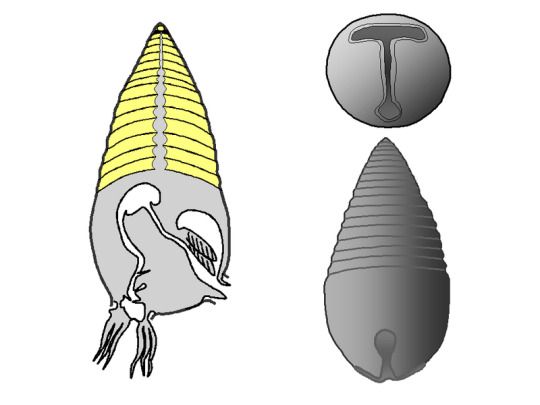#Anaspides
Text

Watercolour of syncarids from On the Anaspidacea, Living and Fossil, 1909
Anaspides tasmaniae
Paranaspides lacustris
Liverwort Yungermannia with 2 Anaspides tasmaniae eggs
#Anaspides#syncarida#syncaridea#syncarid#crustacean#art#scientific illustration#sciart#biological illustration#watercolour#(at least I think it's watercolour)#animals#(usually don't use this many tags but you know. I've got to spread the syncarid art image)#vintage art#liverwort#Paranaspides#Anaspides tasmaniae#Paranaspides lacustris
13 notes
·
View notes
Text
Addendum: I suck
I finished yesterday's Woodward Wednesday post in a hurry and made a couple of stupid errors I now need to correct here.
First of all, there is in fact not one but two illustrated pages of Silurian marine life that Alice B. Woodward made for Evolution in the Past, the other one being this one featuring at-least-sort-of fish (which I wrongly stated as only appearing in the Ordovician illustration)
There is actually much to be said of this page, so maybe it's best it be given its own post.

The vaguely sturgeonesque animals at the top are Lasanius, which has recently turned out to be a cyclostome, related to hagfishes and lampreys rather than "proper" fish. Hiding in the background are Lanarkia, and on the sea floor on the left looking oddly like a skate is Thelodus, both thelodont agnathans. In the foreground is Birkenia, an anaspid that isn't even as close to jawed fishes as the thelodonts.
There is also a Tremataspis swimming on the right, looking more like a generic osteotracan than this weird easter egg with a tail ought to (see Nobu Tamura's modern reconstruction below:)

H.R. Giger would tell you this is what a face hugger deposits down your throat, were he still alive.
There's another bulbous weirdo in the illustration: the bottom-dwelling betentacled onion-mimic that looks a bit like some kind of scotoplane. That is no sea cucumber, but a strange nautiloid called Gomphoceras. This thing is so obscure and odd I don't think even Joschua Knüppe has made a reconstruction of it yet. You hear that, Joschua? I'm calling you out!

What if Nautilus, but a Mandalorian?
Finally there's that sort of vaguely horseshoe crab -like animal on the bottom, under Gomphoceras. What exactly is that? In the book it's listed as 'Hemiaspis', which is a genus of snake, so a clear case of a preoccupied name. The fossil appears to have been renamed Limuloides, and is now considered a planatergan, a sister group of horseshoe crabs that includes everything from spiders to sea scorpions.

They really aren't kidding when they say horseshoe crabs refuse to change, when their nearest relatives started out looking almost the same and are now spinning webs probably in the very room you are in right now.
#vintage paleoart#paleoartists#silurian#fish#nautiloid#horseshoe crab#jawless fish#errata#Woodward Wednesdays#Paleozoic
0 notes
Text
Anaspids, Jawless Fish Whose Armor Tell Us Where They Belong - #UREES270 - 2018
Anaspids, Jawless Fish Whose Armor Tell Us Where They Belong – #UREES270 – 2018
Keating and Donoghue, 2016, Histology and affinity of anaspids, and the early evolution of the vertebrate dermal skeleton: Proceedings of the Royal Society B, v. 283: 20152917 What’s it about? The anaspids were a group of early, jawless fishes with bony armor covering their bodies. The authors discuss the structure of the bony armor and complete analyses to determine where anaspids actually fit…
View On WordPress
0 notes
Text
There are so many interesting species (I've particularly noticed for freshwater crustaceans) that are really rare and interesting, but easy to find in a small, localized area. Does anyone know if there's some sort of a map for creatures that are very unusual, but easy to find if you're in the area if that makes sense?
#if not I kind of want to make a giant list...#thinking of things like anaspides where they're pretty easy to find but are only in some lakes and you basically never hear about them
6 notes
·
View notes